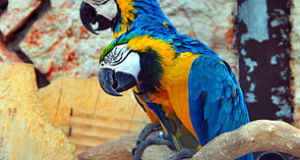
Mess-Free Suet
Some of the most interesting new products are those formulated to attract specific types of birds. I’m particularly enthused about Suet to Go Pellets, which provide the benefits of a vital cold weather bird food without the mess of trimming fat from meat (hopefully you are not buying too much fat-laden meat anyway!).
Suet Pellets are packaged with different “extras’ such as freeze-dried insects, berries and raisins, all of which increases their attractiveness to woodpeckers, nuthatches, chickadees and a host of other protein-lovers. Unique, colorful pellet feeders simplify their use.
Larger Birds and Mammals
Peanuts appeal to animals as diverse as Blue Jays, Grackles and Flying Squirrels, especially when fat and protein needs soar as winter sets in. Shelled Peanuts are useful for situations where cleanup is difficult or impossible.
If you enjoy feeding Gray or Red Squirrels, or their amusing nocturnal relatives the Flying Squirrels, please check out our extensive line of small mammal foods and feeders. If you are a “purist” who does not enjoy feeding these amusing but overbearing little fellows, you might wish to consider our squirrel-proof feeders or animal traps.
Finches and Smaller Birds
Goldfinches and other small birds are often very cautious, and likely to be out-competed by more aggressive species. Thistle-Blend Foods will help attract them, especially if offered in a feeder designed to dispense tiny food items and exclude larger birds.

Other Species-Specific Foods
Other specially formulated diets may be helpful if wish to try your luck at luring some of your favorite wild birds. Please check out our foods for doves, quail, woodpeckers and chikadees, Bluebirds and other insect specialists and Cardinals.
Further Reading
Learn more about bird feeding and how to find the best birding sites in the USA and abroad here.
Great bird-watching videos.
 That Bird Blog – Bird Care and History for Pet Birds
That Bird Blog – Bird Care and History for Pet Birds



